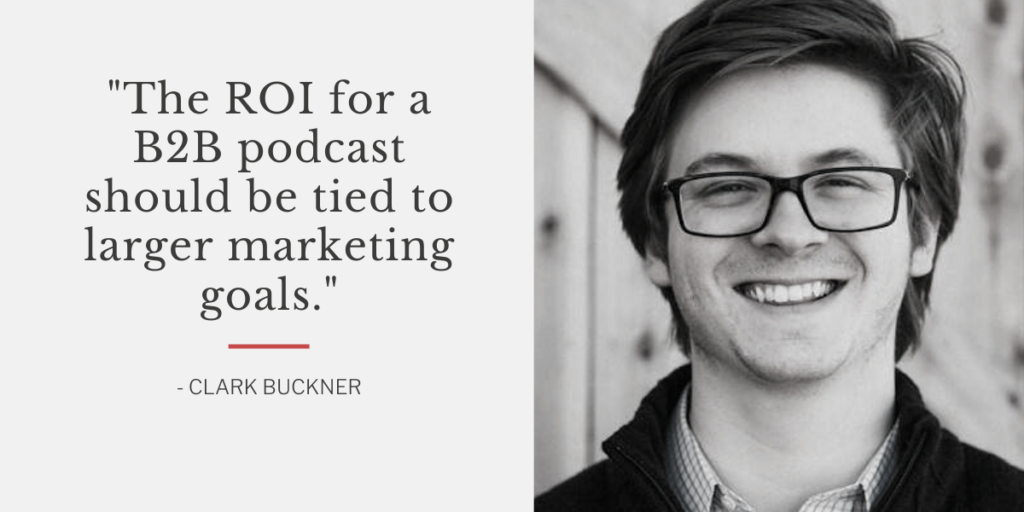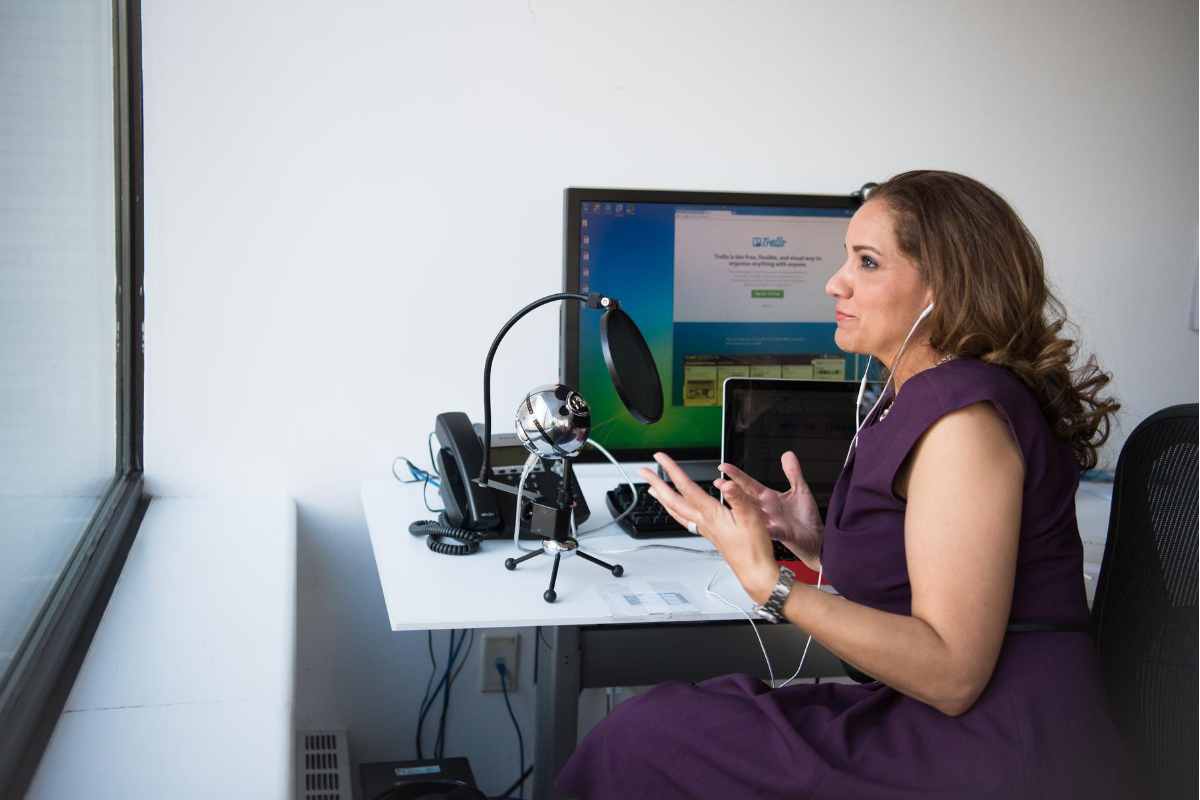90 million Americans regularly consume podcasts. And B2B podcasts are an increasingly key part of that.
Listeners tend to be educated, affluent and loyal – the exact audience most B2B brands want to reach.
That’s why we were fascinated to talk with Clark Buckner, co-founder and partner of podcast consulting agency Relationary Marketing, for our July 2020 KG Connects webinar. He gave us the scoop on why B2B podcasting works so well and shed light on his five-step process for how to develop a great B2B webinar.

Does B2B podcasting work?
Yes, B2B podcasting works well for three reasons:
- Podcasts are intimate – When you listen to a podcast, it’s a real human speaking directly to you about something they’re passionate about and you’re interested in. It establishes a sense of shared experience that supports the idea of an established relationship.
- Podcasts are accessible – In the car, at work and especially streaming from smartphone on any number of apps, podcasts are a versatile medium for sharing and consuming high-quality content.
- Podcasts are passively consumed – While listenership has taken a small hit during pandemic as fewer people commuted, they’re still popular to consume while doing other things like going for walks, doing a workout or cooking dinner. Really, any time away from a screen provides both a captive and passive audience for podcasts.
How do I start a B2B podcast?
Clark uses a tried-and-true formula when helping his clients launch a great B2B podcast:
- Content design
- Invite/preparation
- Recording
- Production
- Publishing
When viewed in a list, it’s easy to assume that each stage should be given equal consideration.
That’s not a wise approach.
Brands considering a podcast have intrinsic challenges. It’s labor intensive and rare to have all the right technology and skills internally to produce a great podcast.
Luckily the barrier to entry to podcasting has gone down as the space has matured (thanks largely to the wild success of the Serial podcast, recently acquired by The New York Times).
It’s now easier and more affordable for agencies and brands to work with a company like Relationary than to do it alone. But first, they need to master step one – content design.
What’s the first step of launching a B2B podcast?
The first step of launching a B2B podcast is content design. A lot of companies get caught up worrying about technology or guests or who will host it… all undoubtedly important questions, but not the first thing to worry about.

Clark recommends focusing exclusively on five elements of content design before stressing the small stuff.
- Goals – What does success look like for your podcast? Be specific about one or two goals that a podcast can uniquely achieve for you. Brand awareness, lead generation or helping existing customers get the most out of your platform are all good options. Given that you’d need 10,000 regular listeners to even consider selling ads, B2B podcasting is about relationships. Sell the mission and a belief in your team and company as trustworthy and capable partners.
- Target audience – Most B2B companies have highly targeted audiences. Will everyone in your consumer base pay attention to or be motivated by a podcast? Will prospects at different stages of the funnel be more interested that others? Once you know what the goal of the podcast is, you can define the audience and figure out what matters to them most.
- Episode structure – Will you do one-on-one interviews between a company employee and a guest? Will you have an independent podcaster lead these conversations instead? Or do you plan to only interview internal experts? You could also develop a narrative structure and tell stories of great case studies or have people you’ve helped record themselves telling a story. Options are limitless, but pick one that will work for you and stick with it.
- Episode frequency and length – How many interesting conversations can you really lead? How much time will you dedicate to the podcast and how much time do you expect your audience to give? Think of podcasts like a TV show, with seasons. Figure out each season’s episodes ahead of time and stick with a standard cadence and episode length. You can always change it up for season two.
- Title/marketing – Like any form of branded content, podcasts need to be promoted to attract attention. Figure out how you’ll recruit listeners and what kind of resources are available to bring in new listeners. Podcasts are far easier to produce than ever before, but without additional promotional effort on top of it, you’ll be sitting on great content with no listeners.
How do you go from plan to production?
With this foundation, it’s relatively easy to go through the rest of the steps as long as you have access to the right network, skillsets and technology.
Step 2: Prep
Figure out who you’re going to have on your podcast and how you’ll prep them to lead a conversation that serves your company’s goals. It’s great when your guests are the kind of experts who can talk at length about a number of interesting ideas. It’s your job to let them know what you need from them, and have a plan for keeping them on track.
Step 3: Record
Unsurprisingly, the environment you record in matters. Surprisingly, the tech doesn’t matter that much. It’s far more important to have a great environment. It’s better to use basic headphones that come with a phone and be in a quiet, confined space than use an expensive mic in an open space such as a kitchen.
Case in point: Clark usually has an office to record in, but working from home during the pandemic, he uses his closet.
Step 4: Produce (i.e. edit)
You’ll never get commercial grade quality from the raw footage you record. To polish the final product, work with a partner or invest in technology that offers sound editing and also content editing.
Don’t over-edit. You want it to sound human. Breathing sounds may feel awkward at first, but it’s elements like this that give podcasting it’s personal touch and relationship power.
Step 5: Publish
At this stage, most brands will send the final product off to their marketing team, creative directors or communications agency to help promote the material and drum up interest.
Like we said before, if people don’t know the content exists, they can’t listen and become loyal brand fans and customers.

Let’s talk about podcasts
If you’re interested in launching a B2B podcast or getting more visibility for one you already produce, we’d love to help you do it. Check out Clark’s full presentation or shoot us an email to set up a free 30-minute consultation.

